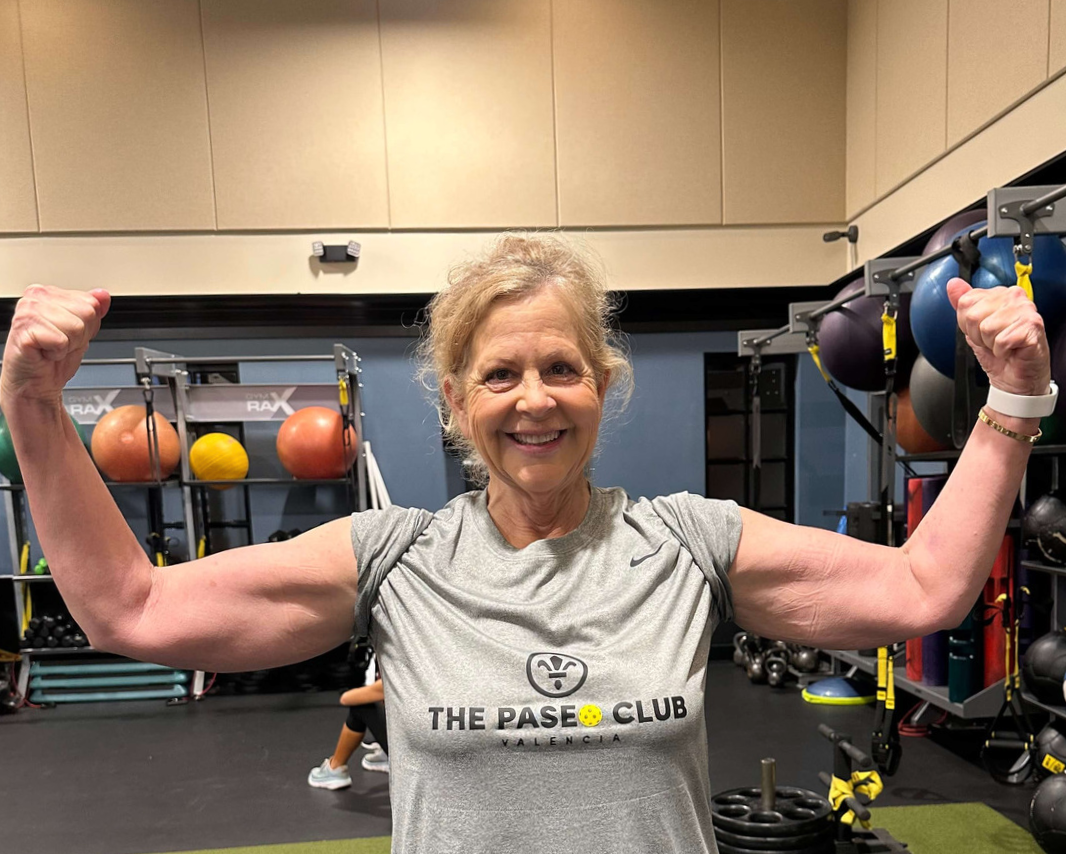How to keep women heart healthy (In observance of National Heart Month)
February 6th, 2023 | 4 min. read
By Jen Azevedo

We think of women as being healthy, vital, and strong. They outlive their male partners by an average of four years, tend to have fewer health problems, and make better lifestyle choices.
But these statistics belie a bigger picture of rampant heart disease.
Heart disease is the number one cause of death for women in the United States. It is responsible for 1 in 5 deaths among women.
The Paseo Club is a social club that has supported members on their journey in fitness for almost twenty years.
We have four certified nutritionists on staff and several experienced fitness instructors. Often we are asked for advice about how to care for one’s health.
In observance of National Heart Month, in this article, we will share with you what steps you can take to best care for your heart.
8 Best steps to care for your heart
1. Exercise
A combination of aerobic workouts — walking, running, swimming, and other vigorous heart-pumping exercises — in combination with strength training using weights or other forms of resistance is best for heart health.
The Centers for Disease Control (CDC) recommends adults complete 150 minutes of moderate-intensity exercise per week and two days that involve strength training.
Exercise also helps to control blood pressure, build bone density, and boost moods.
2. Don’t smoke
Smoking is a major risk factor for heart disease. The chemicals you inhale when you smoke cause damage to your heart and blood vessels, making you more likely to develop atherosclerosis (plaque buildup) in the arteries.
Any amount of smoking, even occasional smoking, can cause damage to the heart and blood vessels.
Smoking poses an even greater risk for some people, especially for women who use birth control pills and people with diabetes.
The good news is that quitting smoking has an immediate positive effect on your body by lowering your risk for atherosclerosis and blood clots.
3. Healthy diet
Diet is an integral part of staying heart healthy. Although it is impossible to eat perfect all the time, aim for the 80-20 rule. This rule is you eat healthy 80% of the time and allow indulgences the remaining 20%.
Try to prepare as many meals at home as possible where you can control the quality of the ingredients and minimize unnecessary additives, artificial colors or flavors, preservatives, and sugars.
Eating a healthy diet means emphasizing these foods:
- Fruits
- Low salt
- Low sugar
- Vegetables
- Whole grains
- Nuts and seeds
- Legumes (beans and peas)
- Lean meats such as chicken, salmon, and turkey
4. Monitor your health
Get regular annual checkups with your doctor and learn your family history. Appointments with your doctor will help you to monitor your heart and make any prescribed changes or treatments necessary to prevent the progression of the disease.
Ensure you are also screened for diabetes because once a person has diabetes, their chance of heart disease significantly increases.
5. Limit alcohol consumption
Chronic consumption of large amounts of alcohol can result in a condition called alcoholic cardiomyopathy. You can actually drink your heart muscle into a weakened state when you consume heavily (four to five drinks a day over several years).
Heavy drinking and/or binge drinking (four or more drinks in a single session for women, five or more drinks in a single session for men)
can increase your blood pressure and risk of developing an irregular heart rhythm.
Binge drinkers are twice as likely to die from any cause, including heart disease, compared to non-binge drinkers.
The CDC recommends women have zero to one drink per day maximum.
6. Lower stress levels
Stress not only affects your mental health, but it harms your body as well.
Stress causes inflammation in your body and increases your blood pressure. This process can weaken the walls of your arteries, making you more vulnerable to heart disease.
Seek professional help if stress is causing you to lose sleep or have feelings of self-harm.
Stress management techniques such as exercise, meditation, time in nature, therapy with a professional, and deep breathing contribute to lowering stress and improving heart health.
7. Know the signs of a heart disease
One of the greatest dangers to women is not knowing the signs of heart disease. Women are more likely than men to have heart attack symptoms unrelated to chest pain.
Common signs and symptoms include:
- Sweating
- Unusual fatigue
- Nausea or vomiting
- Shortness of breath
- Heartburn (indigestion)
- Pain in one or both arms
- Lightheadedness or dizziness
- Neck, jaw, shoulder, upper back, or upper belly (abdomen) discomfort
8. Maintain a healthy weight 
When women hear the advice to maintain a healthy weight, an image of a size zero model body often comes to mind.
This myth harms women’s self-esteem and can make them feel that there is no hope of obtaining a healthy weight.
Healthy weight and size are a wide range. People are born with certain size tendencies based on their genetics.
There are three primary body types:
- Ectomorphs are long and lean with little body fat. They traditionally have a hard time gaining weight and do not have curvy figures.
- Endomorphs have higher body fat, more muscle, and can gain weight easily. Women with this body type are not necessarily overweight, but they do tend to have a more voluptuous figure.
- Mesomorphs are athletic and strong. They have a body type that is in between ecto- and endomorphs. They can maintain muscle and have a moderate metabolism.
These somatotypes are generalizations — people can be combinations of these types or somewhere in between. But they do illustrate that we physically cannot all be ectomorphs — regardless of what we eat or how much we exercise.
 Final thoughts on staying heart healthy
Final thoughts on staying heart healthy
Now that you have read this article, you have learned how serious heart disease is for women and how you can best care for your heart — and overall health. With simple, practical steps, you can minimize your risk of heart disease.
We know that changing your habits can be difficult to do alone. That is why we encourage you to partner up with a friend or group for fitness classes, diet changes, or any other health improvements you want to make.
The Paseo Club offers over 60 group fitness classes each week. Whether it is weights, cycling, Pilates, or Zumba, we have something for everyone at every fitness level. We also have a junior Olympic-size pool and courts for tennis and pickleball.
If you think a community-oriented fitness club is your cup of tea, come and check out the Paseo Club by taking a tour of our eight-acre facility. Tours are offered daily.
To learn more about fitness and health, then check out these three articles.
- How to avoid the February slump (Staying committed to your resolution)
- The benefits of finding community (and the top 10 places to find your people)
- Where to get a smoothie in the Santa Clarita Valley (Smoothie bars in review)
Jen Azevedo is a tennis professional, pickleball professional, personal trainer, group exercise instructor, and the general manager of the Paseo Club. She loves the community at the Paseo Club and that it is also a safe and fun place for her daughter. Jen’s favorite activities are joining her tribe for trail races or her partners for tennis matches. Occasionally Jen slows down to relax with a book — she reads over 100 a year!

